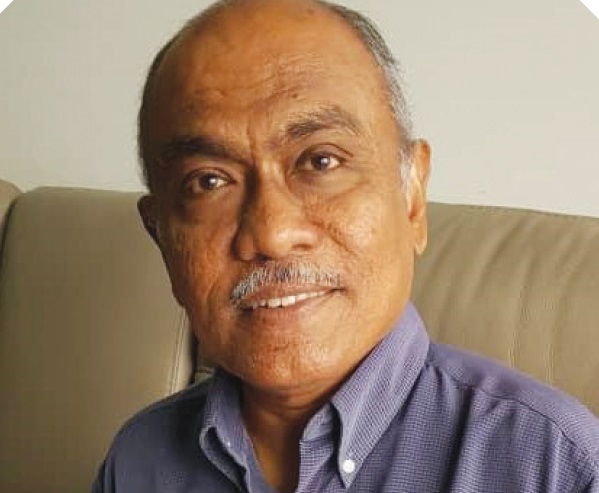Collegiality of Bishops and Catechesis
In general, ‘collegiality’ refers to “the doctrine that all bishops, with the pope, have a corporate responsibility for the unity of the faith and of communion in the universal Church” (The New Dictionary of Theology).
Oct 18, 2024

In concluding the previous article, I stated that after the Second Vatican Council (1962-1965), there emerged an understanding that all bishops, under the leadership of the pope, are responsible for catechesis in the Church. It is related to one of the most distinctive features of the Council, namely the collegiality of bishops. In this fourth and final article on the role of bishops in catechesis, I will discuss the importance of collegiality in catechesis, by giving, as an example, the publication of the Catechism of the Catholic Church.
Collegiality of bishops
In general, ‘collegiality’ refers to “the doctrine that all bishops, with the pope, have a corporate responsibility for the unity of the faith and of communion in the universal Church” (The New Dictionary of Theology). It also refers to the mutual interaction and collaboration within the college of bishops on the international, national and regional levels.
One important expression of collegiality is the synod of bishops. It was established by St. Paul VI in 1965. According to the 1983 Code of Canon, “a synod is a group of bishops who have been chosen from different regions of the world and meet at fixed times to foster closer unity between the Roman Pontiff and bishops who assist the Roman Pontiff with their counsel in the preservation of faith and morals and in the observance and strengthening of ecclesiastical discipline, and to consider questions pertaining to the activity of the Church in the world” (Can. 342). Basically, a synod allows bishops to periodically come together to discuss important issues for the Church and to offer advice to the pope.
Collegiality at work
As far as catechesis is concerned, two synods of bishops have to be highlighted. These are the synod to discuss the theme of catechesis in 1977, which resulted in the promulgation of the Catechesi Tradendae by St John Paul II in 1979 and the Extraordinary Synod of Bishops in 1985, whereby bishops came together to reflect on the impact of Vatican II, twenty years after its closing. At this synod, some bishops proposed that a “compendium of the Catholic faith” or a universal catechism be produced.
The call for a universal catechism was not something new. The Council of Trent (1545 – 1563) led to the publication of the first universal catechism, the Catechism of the Council of Trent in 1556. Requests were made for a similar catechism at First Vatican Council (1869-1871) but it did not materialise. At the Second Vatican Council, although there were requests for a catechism, the majority of bishops did not agree. In 1985, however, most of the bishops were convinced that the time had finally arrived for work to begin on a new catechism for the entire Church.
The appointment of a commission
On the recommendations of the Synod, in 1986, St John Paul II appointed a commission, consisting twelve cardinals and bishops under the leadership of Cardinal Josef Ratzinger (later Pope Benedict XVI). It was decided that the catechism should be aimed, above all, at the bishops since they have the greatest responsibility for catechesis in the diocese and in the Church. Through the bishops, the catechism was to be the Church’s book of inner unity in faith and proclamation, while at the same time, providing a standard by which doctrine is preached and taught at the local level. The catechism was intended to reflect the faith of the Church.
The editorial committee
An editorial committee, headed by Bishop Christoph Schonborn (now Cardinal), made up of seven bishops who had catechetical expertise, was set up. The committee was responsible for the writing of the text. The catechism was not to be the work of specialists but of pastors. Therefore, the first three parts of the catechism were assigned to three pairs of bishops from different parts of the world. The fourth part on prayer, which was added later, was assigned to a priest, an expert on Eastern theology. Reflecting on this years later, Cardinal Ratzinger stated:
“To be frank, I did initially feel it was rather rash to suppose that a group of authors like this, spread all over the world - authors who as bishops were in any case already carrying heavy workloads – could manage to complete a book together.”
The bishops share their opinions
The first draft of the catechism was sent to forty consultants in 1987. The revised draft was sent (sub secreto) in 1989 to bishops all over the world for their comments. More than a thousand bishops made their opinions known, with about twenty-four thousand observations sent to the committee.
The fruit of collegiality
The catechism was published in 1992. It was the ninth and final draft and bore the name: Catechism of the Catholic Church. On June 25, 1992, St John Paul II gave formal approval to the final text and on December 7, 1992, a formal ceremony of transmission of the Catechism to the whole Church was held. In his Apostolic Constitution, Fidei Depositum, the Pope wrote:
“It can be said that this Catechism is the result of the collaboration of the whole Episcopate of the Catholic Church, who generously accepted my invitation to share responsibility for an enterprise which directly concerns the life of the Church… This achievement of the Catechism thus reflects the nature of collegial nature of the Episcopate, it testifies to the Church’s catholicity.”
Conclusion
The role of bishops in catechesis has evolved over the centuries. Today, bishops are the teachers and guardians of the Faith, the catechists par excellence, the first catechists, and those most responsible for ca-techesis in their diocese. They also share this responsibility with the pope for the whole Church. According to St John Paul II, by involving the bishops in the task of catechesis, “they are invited by the Holy Father to sound out, together with him, the symphony of faith of the Church”. May the Lord bless and guide them in this crucial task.
---------------------------
The key ideas of the article are presented in a simple illustrated format below. The images are taken from the public domain. 
(Dr Steven Selvaraju, STD, STL, holds a Doctorate in Theology with Specialisation in Catechetics and Youth Ministry from the Pontifical Salesian University, Rome. He serves as Director of the Archdiocesan Catechetical Centre, Archdiocese of Kuala Lumpur.)







Total Comments:0